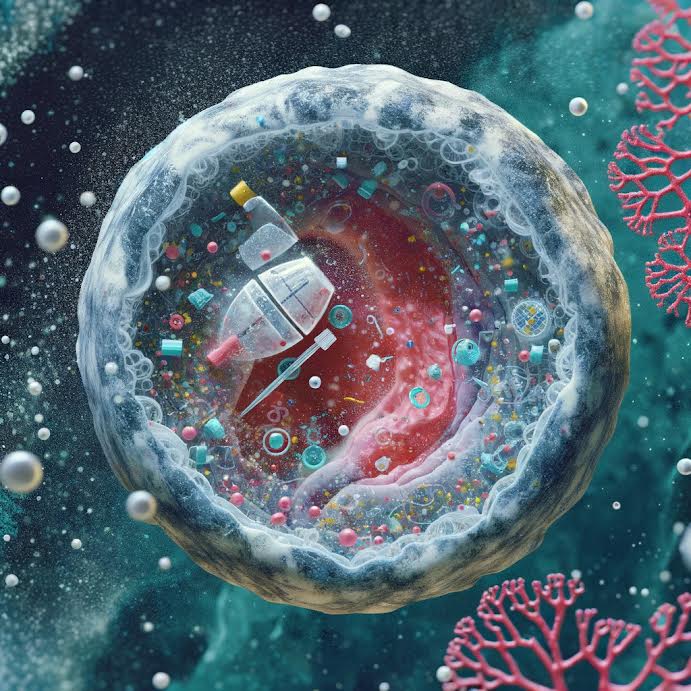In a new study conducted by a team of toxicology scientists at the University of New Mexico, an alarming discovery was made: Microplastics were found in all 62 human placenta samples examined. This revelation underscores a growing environmental crisis, highlighting the pervasive infiltration of microplastics into the most intimate aspects of human life.
Microplastics, as defined by the National Oceanic Atmospheric Administration, are minuscule plastic fragments less than five millimeters in length. These tiny pollutants have become a ubiquitous presence, infiltrating ecosystems worldwide, from the deepest ocean trenches to the summit of Mount Everest, and now, startlingly, the human placenta.
Matthew Campen, the study’s lead researcher, expressed deep concern over the findings, published in the journal Toxicology Sciences. The placenta samples contained microplastics at levels ranging from 6.5 to 790 micrograms per gram of tissue. “Dose makes the poison,” Campen remarked, emphasizing the toxicological principle that the severity of a substance’s impact is directly related to its concentration. The presence of microplastics in every sample analyzed signals a potential threat not only to human health but to all mammalian life on the planet.
The method used in this study represents a significant advancement in the detection and quantification of microplastics in biological tissues. Researchers employed a technique known as saponification to break down the organic components of the placenta samples, followed by ultracentrifugation to isolate the microplastics. These were then subjected to pyrolysis, a process that heats the plastic to high temperatures, resulting in gas emissions that are analyzed by mass spectrometry to identify the specific types of plastics present.
The most common polymer detected in the placenta tissues was polyethylene, constituting 54% of the total plastics found. This material is commonly used in the production of plastic bags and bottles. Other significant polymers included polyvinyl chloride (PVC) and nylon, with a mix of nine other polymers making up the remainder.
The global surge in plastic production since the early 1950s has led to an unprecedented accumulation of plastic waste, much of which has been discarded or relegated to landfills. There, exposure to ultraviolet radiation initiates the breakdown of these materials, gradually fragmenting them into microplastics. These particles then infiltrate the environment, contaminating water sources, the air, and, as this study alarmingly reveals, even the human body through ingestion and inhalation.
Marcus Garcia, a postdoctoral fellow in Campen’s lab who conducted many of the experiments, emphasized the importance of their new analytical method. Until now, quantifying microplastics in human tissues was challenging, often relying on microscopic counts that could miss smaller particles. “We can take it to that next step to be able to adequately quantify it,” Garcia stated, highlighting the method’s ability to provide precise measurements of microplastic content.
Despite their small size, microplastics pose significant health risks. They have been shown to cause damage to human cells in laboratory settings, and their ability to cross cellular membranes raises concerns about their potential to contribute to various health issues, including inflammatory diseases, cancer, and reproductive problems. The study’s focus on placentas is particularly concerning, as these organs have a relatively short development period, suggesting other body tissues may accumulate even higher levels of microplastics over time.
The presence of microplastics in placentas and their potential health implications are only part of a larger environmental and public health crisis. With plastic production expected to double every 10 to 15 years, the challenge of addressing this issue becomes increasingly daunting. Campen’s pessimistic outlook reflects the enormity of the problem: “Even if we were to stop [plastic production] today, in 2050 there will be three times as much plastic in the background as there is now.”
 RSS Feed
RSS Feed















 March 8th, 2024
March 8th, 2024  Awake Goy
Awake Goy 

 Posted in
Posted in  Tags:
Tags: 













